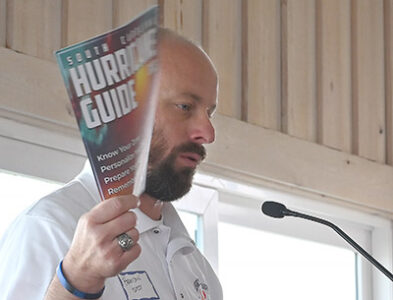Hurricanes
Updated state plan reduces evacuation times

The worst-case scenario for a hurricane evacuation in Georgetown and Horry counties shows it will take more than a day to get residents and visitors out of harm’s way.
That’s based on the peak number of visitors and 100 percent compliance with an evacuation order, said Brandon Ellis, director of Georgetown County Emergency Services. And it includes everyone in Zones A, B and C.
“It would have to be a pretty significant storm for us to evacuate Zone C,” Ellis said. That includes areas west of the Waccamaw River.
The state Emergency Management Division revised its hurricane evacuation plan this year. The major change was a shift in the boundaries of the evacuation zones. On the Waccamaw Neck, the area west of Highway 17 is in Zone A. The area from the highway to the river is in Zone B.
“The most likely scenario, we’re going to evacuate Zone A,” Ellis said.
The new boundaries reduced the number of people in Zone A by just over 25 percent.
A Zone A evacuation during peak tourist season with 100 percent compliance would take 20.8 hours, according to the updated plan. That doesn’t factor in lane reversals on major highways in Horry County, Ellis said.
Hurricane Beryl, which moved into the Caribbean Sea this week, grew from a tropical depression into a major hurricane in less than 48 hours. That short time frame is rare, experts said.
South Carolina’s evacuation plan has timelines for 24-, 36 and 48-hour scenarios, with 48 hours being for the entire coastline.
“We have a good amount of breathing room,” Ellis said of the 29.4 hour evacuation estimate for all three zones. “Everything’s driven by time.”
The evacuation times are shorter than those the state used in its previous plan, which ranged from 25 to 43 hours for the northern coast.
“We really have fine-tuned this,” Ellis said. “We had more traffic modeling resources this time than we had last time.”
The worst-case scenarios also include a best-case scenario: 100 percent compliance. That’s not likely to happen.
“I hope for 50 percent compliances,” Ellis said. “I anticipate a 30 percent compliance rate on anything less than a major storm.”
The reduction in the Zone A population was a result of focusing on storm surge rather than wind speed, the factor that categorizes the strength of storms.
“It’s the benchmark. I personally despise the Saffir-Simpson scale for that reason,” Ellis said of the wind scale known for the men who created it in the 1970s. “Focusing solely on the wind or the category of the storm is not good.”
Using storm surge as the gauge for evacuations will reduce the likelihood of “over-evacuating,” he said.
Ellis saw the impact of that in a series of evacuations a few years ago. People who returned from an evacuation to find little impact from the storm questioned the need to leave in the first place.
The update to the state evacuation plan included a behavioral analysis.
“It’s really alarming, some of the results we saw. There’s a lot of complacency,” Ellis said.
Last month’s microburst that downed trees and knocked out power in parts of the Waccamaw Neck offered a glimpse of what people can expect after a major hurricane, he added.
“We can’t force people to leave. Even in a mandatory evacuation, we’re not going door to door dragging people out of their homes,” Ellis said.
Although the population and the traffic on Waccamaw Neck have increased, Ellis is confident that there will be time for everyone who wants to evacuate to do so.
“The majority of people are going to wait until the last hour,” he said. But even then, “we have more than enough time to evacuate our coast in a major hurricane.”
People who are concerned about getting out in time, can also plan to leave ahead of the governor’s order. A good clue that an order is pending is the scheduling of a press conferences. They aren’t held to announce that no evacuation is planned, Ellis said.
“If you get stuck in the evacuation on U.S. 17 in Georgetown County because of storm inundation, it’s because you didn’t leave in time,” Ellis said.




